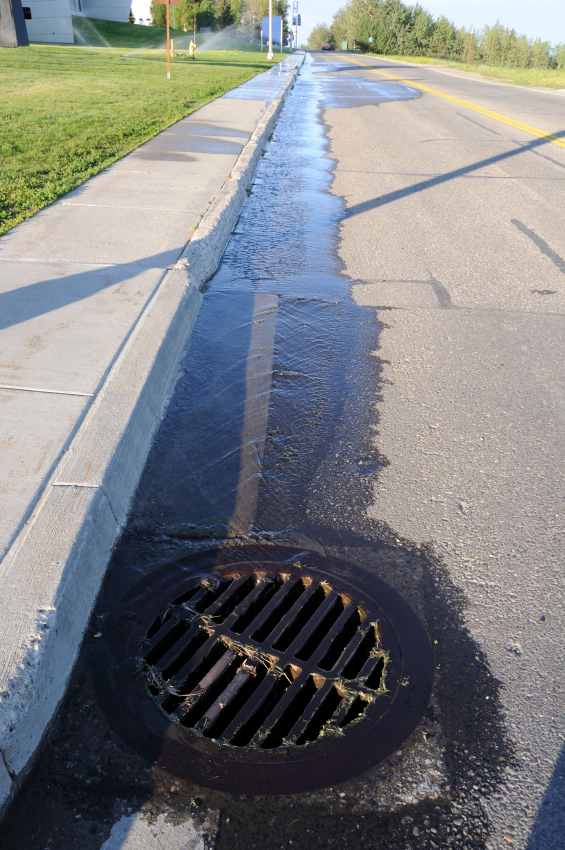
3 Symptoms You Shouldn’t Ignore
It’s the time of year for heavy downpours and punishing hot temperatures. That’s why it’s so important to maintain your storm basins. First, we’ll take a look at exactly what they are and how they help to ensure the safety of your paved and parking areas.
What Storm Basins Do
A storm basin, also known as a catch basin, is like a bowl underneath the parallel bars, or grill, that helps to collect storm drainage and carry it to the storm sewer. In other words, it’s the main connection for a storm drain system. As long as they work properly, then can protect your parking lot from having dangerous standing water conditions, among other things. But many problems can arise. For instance, your storm drain basin can become clogged or crack. Each type of problem requires a specific solution. So if you’re experiencing problems with proper storm drainage, here are some suggestions for what needs to be done. We recommend you call on professionals to perform the necessary work, because this is definitely not a DIY project!
Take a look at some of the following storm drain basin issues and what you should do about them:
Problem #1: There is slow drainage or standing water around the storm drain.
This is likely caused by debris—leaves, pieces of trash or sediment—that has settled to the bottom of the catch basin and is blocking the drain pipes. This is why water has no place to go, other than overflowing onto your pavement. Over time, this run-off water will penetrate into your pavement, causing potholes and potentially much worse structural problems.
The Remedy: Usually a good thorough cleaning can remove troublesome debris. Storm drain basins can either be cleaned out by hand or by using a vactor truck with a high-powered vacuum. Usually, a cleaning is all that is necessary in this case.
Problem #2: The metal grate seems to be popping out.
This may be caused by several things. Over time, storm drains will settle and deteriorate, which causes cracks and compromises the structure of the system. Sometimes water will become trapped and freeze when the temperatures drop. When this happens, ice will expand, leading to damage of the mortar around the storm basin’s frame. This will cause the grill, or metal grate, to become loose or pop out.
The Remedy: If there has been excessive deterioration over time, the casting may need to be rebuilt around the storm basin. This issue should be addressed as soon as possible, because a grate that is loose or popped out can create a concrete lip that people will trip over; or worse, they could slip on the loose grate itself. This is a hazard, and a liability, you don’t want.
Problem #3: There are cracks around the storm drain and in the surrounding pavement.
If you notice small cracks around the drain and in your pavement, it can be caused by regular deterioration over time. But in some cases, drains aren’t always installed properly, or not enough drains are put in place. When this happens, problems will develop almost immediately with drains failing and possible structural damage in your parking lot.
Remedy: Small cracks or abrasions in the pavement are usually able to be quickly repaired. However, if drains weren’t installed properly, you’ll want to have them inspected. If it’s discovered that your parking lot wasn’t sloped correctly and drains weren’t installed properly, it may be necessary to have your drains rebuilt and areas of your parking lot repaved.
If you need to make repairs, be sure to get them done as soon as you can to avoid more costly damage. Remember, the weather won’t wait for you to get your drain system in order, so call on professionals like the ones at Jolin Paving & Excavating, Inc. to get it done! Once you’ve made repairs, set up an inspection schedule so you’re never caught off-guard again.
Delivering unparalleled customer service, Jolin Paving & Excavating, Inc. goes the extra mile at a reasonable cost to get the job done. Contact us today for a consultation!
Jolin Paving & Excavating, Inc. is your New England connection—serving Massachusetts, southern New Hampshire, Vermont, Maine and northern to central Connecticut and Rhode Island.
